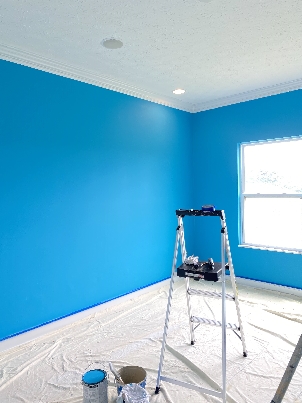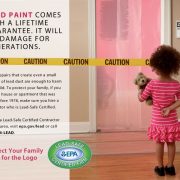Why was lead added to paint?
Lead was added to paint for color and durability. When lead is added to paint it can speed up drying time, increase durability, and help the paint maintain a fresh appearance. In addition, adding lead to paint can help resist moisture that causes the paint to corrode. Furthermore, the heavy metal compound can serve as a pigment to the paint. Lead tetroxide makes a bright red paint, and lead carbonate will make the paint a white or a cream color.
Why was lead eliminated from household paints?
It is a neurotoxin and can cause severe health effects in high doses. Furthermore, it is a cumulative poison. Most children under six years of age will only process fifty percent of the lead they ingest or breathe. Adults will process out ninety percent of the dust that they are exposed to. However, since ten to fifty percent stays in the body, a bunch of small exposures could accumulate to a large exposure.
For instance, if the paint is disturbed or left to deteriorate. It will release lead dust. Once the dust has been released. It will get smaller and smaller over time. This will allow the heavy metal to get so small, that you cannot see it, but you can breathe or swallow it. Therefore, the tiny dust particles will start to blow around the house. Once this happens, it will start to coat the floors, tabletops, windowsills and toys that kids play with. Toddlers will crawl around on the floor, use the table tops and windowsills to pull themselves up, and play with their toys. After getting the lead dust on their hands and fingers. Toddlers will put their fingers in their mouths causing them to be poisoned.
In theory, adding lead to paint would make sense since it made it more durable. It wasn’t until the late 1800’s until it was discovered to be toxic to humans. Most of the industrialized world had removed it from household paint in the early 1900’s. In 1972 the United States government started to regulate the amount of lead in the paint. Finally, in 1978 the Consumer Product Safety Commission banned the sale of lead-based paint for residential use. Most homes built after 1978 should not contain lead-based paint. However, some homes may still contain lead-based paint because existing supplies of paint containing lead may still be available.
Lastly, if you live in a house built prior to 1978. Hire an EPA Certified Firm to conduct your renovation. If you plan on self-performing your renovation. It is recommended, however, not required that you attend an 8 hour EPA RRP Initial Training course prior to beginning. Therefore, if you would like to register for an 8 hour EPA RRP Initial Training course please click here, email Erika@pasafety.com, or dial 877-209-9648.
Related Articles:
Certify Your Firm
Free Safety Meetings
Painting Company Training Requirements
Renovator Forms

 Maria Teepe
Maria Teepe
 Scott Teepe Jr
Scott Teepe Jr